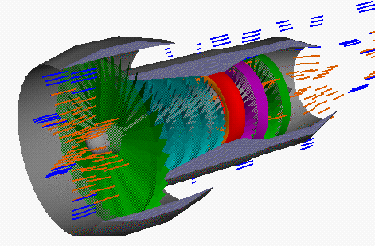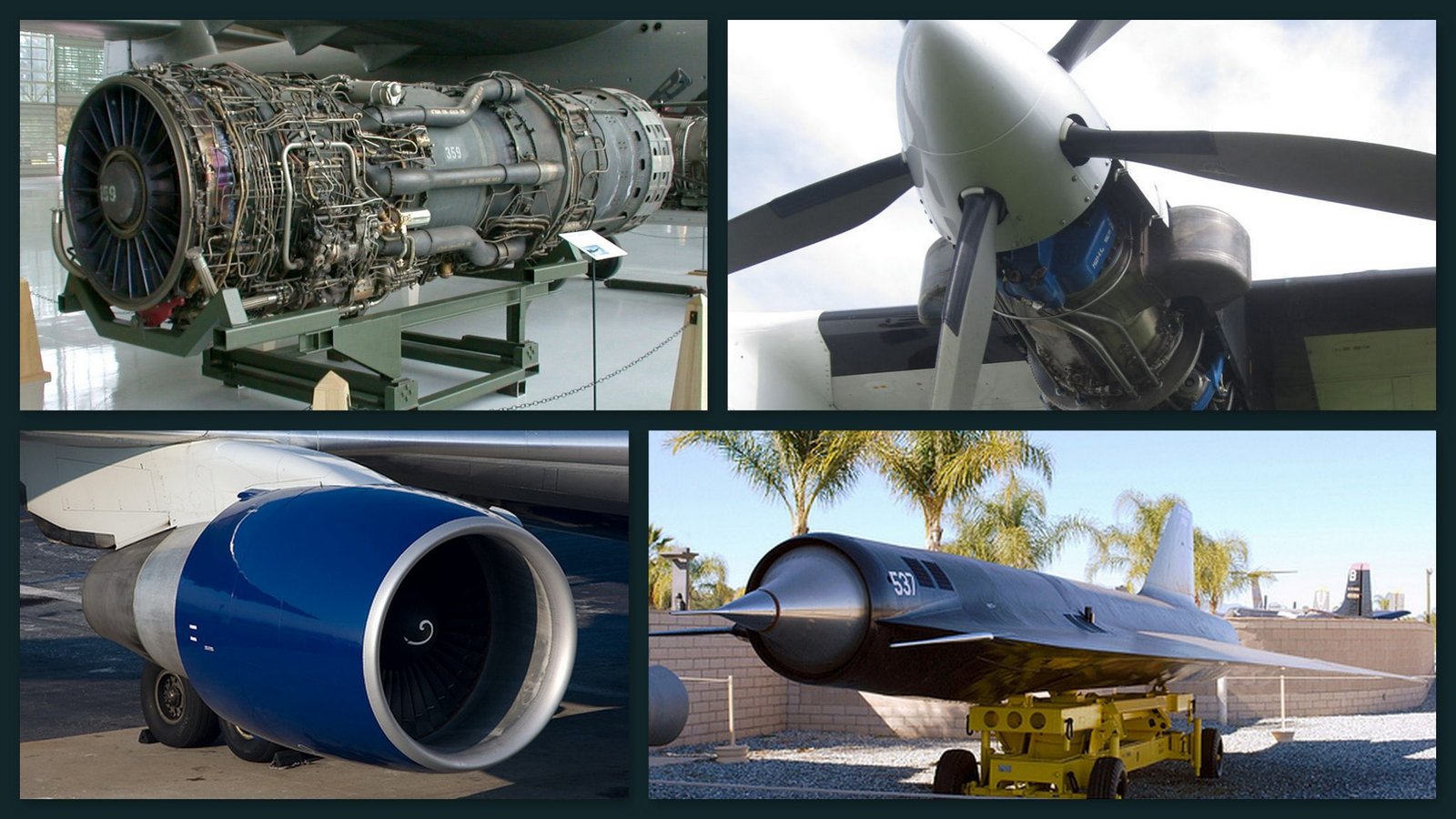The first jet engine successfully flew in August, 1939.
Hans von Ohain of Germany was the designer of the first operational jet engine, though credit for the invention of the jet engine went to Great Britain’s Frank Whittle. Whittle, who registered a patent for the turbojet engine in 1930, received that recognition but did not perform a flight test until 1941.
Its been more than 75 years, there has been continuous development in jet engines & has a significant increase in their efficiency. There are many types of jet engines depending on their construction & power they can deliver. Todays jet engines are able to produce so much of thrust that airplanes could fly at speeds multiple times the speed of sound !
Jet engines :-
Jet engines are internal combustion engines discharging hot exhaust gases at high velocity that generate thrust. Unlike the internal combustion engines in automobiles & trucks which convert the up & down movement of the piston to rotary movement of crankshaft, jet engines simply produces power by sucking air at the front side & discharging it at the back side.
Types of jet engines/gas turbines :-
Turbojet engines –

- These were the first jet engines.
- The fans in the front does the work of compressor. The compressed air is then forced into the combustion chamber.
- As the air is already at high pressure and high temperature, fuel is injected into it. Combustion takes place into the chamber & high amount of exhaust gases are produced.
- These hot expanding gases are then made to flow through turbine which causes the blade to rotate. The turning of turbine also helps to run the compressor as they are connected to the same drive shaft.
- The discharged gases are then allowed to exit through nozzle at high speed which produces thrust & propels the aircraft.
For detailed explanation of a jet engine’s parts, their functions & its working, read one of my previous articles – How do jet engines work ?
Turbofan engines –

- A turbofan engine is a engine very similar to the jet engine. Like the turbojet, it uses the same gas generator core i.e compressor, combustor, turbine, to produce thrust & turbine is used to run the compressor as well as the fan.
- Turbofans differ from the turbojets in the way they have an additional component – a fan.
The fan sucks in air & then further gets compressed & combustion takes place in the burner. - As you can see in the animation, instead of burning the whole fresh charge, only some part of it is used for combustion & the rest of the air just bypasses (goes around) the engine. The air that goes around the engine has a slight more velocity than the free stream.
- So a turbofan gets some of its thrust from the core and some of its thrust from the fan. The ratio of the air that goes around the engine to the air that goes through the core is called the bypass ratio.
If the fuel flow rate is same for the turbojet & turbofan engine, the turbofan will generate more thrust because the flow of discharged gases gets accelerated by the bypassed air. - This means that turbofan engines are more fuel efficient than turbojets.
Turboprop engines –

- Many low speed transport & small aircrafts use turboprop engines. Turboprop engines use a gas turbine core to turn the propeller.
- The core is similar to the turbojet or turbofan engine as discussed above.
- The difference is instead of expanding all the gases through the nozzle to produce thrust, most of the energy is used to drive the turbine. The turbine then turns the drive shaft which rotates the propeller.
- The exhaust velocity of a turboprop is low and contributes little thrust because most of the energy of the core exhaust has gone into turning the drive shaft.
Turboshaft engines –

- Turboshaft are a special type of jet engines which are used in helicopters.
- Just like the turboprops, turboshaft engines are used to produce shaft power rather than thrust.
- Similar to all above ones, fresh air is sucked and compressed with the help of a multi-stage axial compressor. Fuel is added to air on its way to combustion chamber through nozzles.
- The ignitor ignites the mixture which produces huge amount of exhaust gases and are passed through set of turbine blades leading to power generation.
- An additional turbine expansion is used to extract heat energy from the exhaust and convert it into output shaft power.
- The shaft power is the transmitted via bevel gear arrangement and gear reduction systems to the rotor mast and blades.
Ramjets –

- Ramjets are very different type of jet engines from design point of view.
- The front side of a ramjet has a conical part which compresses the intake air.
- At the exit of the inlet, the air is at a much higher pressure than free stream conditions.Fuel is injected for combustion & produces thrust by expelling the hot gases through the nozzle.
- These types of engines have no moving parts yet they are able to achieve speed of Mach 5 (5 times the speed of sound).
- These engines don’t develop ant static thrust; hence a ramjet vehicle need some type of assisted takeoff such as another aircraft.
- Ramjets are mainly used in guided missile systems.
You might like to know about The Top 10 Airplanes in the World !
Scramjets –

- The name “scramjet” comes from “Supersonic Combusting ramjet” !
- Like a ramjet, they consist of an inlet, a combustor, and a nozzle. The primary difference between ramjets and scramjets is that scramjets do not slow the oncoming airflow to subsonic speeds for combustion, they use supersonic combustion instead.
- Scramjets can operate at speeds above Mach 6 where traditional ramjets are too inefficient.
- Advantages :- 1) Does not have to carry oxygen. 2) No rotating parts makes it easier to manufacture than a turbojet. 3) Higher speed could mean cheaper access to outer space in the future.
- Disadvantages :- 1) Difficult / expensive testing and development. 2) Very high initial propulsion requirements. [Source]
animation sources :- NASA


2 comments on “Types of Jet Engines (animations)!”
I Believe the first successful jet engine powered flight was the He 178 on August 27, 1939 of an engine built by Hans von Ohain for Ernst Heinkel.
yes.. Frank Whittle & Hans von Ohain independently developed the concept into practical engines in late 1930s ! while Whittle tested his engine in 1941 !